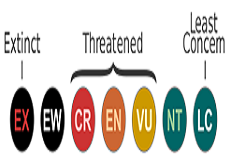|
Geography
Unprecedented ‘bomb cyclone’ in US

|
NASA’ Earth Observatory had shown that, a blast of Arctic air will plunge south and help trigger a powerful blizzard that will churn through the central and eastern US.
What is Bomb Cyclone?
- A bomb cyclone is a large, intense mid-latitude storm that has low pressure at its centre, weather fronts and an array of associated weather, from blizzards to severe thunderstorms to heavy precipitation.
- It becomes a bomb when its central pressure decreases very quickly—by at least 24 millibars in 24 hours.
- “Bombogenesis is the technical term. ‘Bomb cyclone’ is a shortened version of it, better for social media.”
- The term bombogenesis comes from the merging of two words: bomb and cyclogenesis.
- Bombogenesis is a popular term that describes a mid-latitude cyclone that rapidly intensifies.
- When a cyclone “bombs,” or undergoes bombogenesis, this tells us that it has access to the optimal ingredients for strengthening, such as high amounts of heat, moisture and rising air.
|
|
Polity and Governance
President inaugurates ‘PRASAD’ project at Srisailam

|
President of India Droupadi Murmu inaugurated ‘PRASAD’ project at the tourism facilitation centre in the pilgrim town of Srisailam in Andhra Pradesh.
About the Project:
- PRASAD is a global charitable organization committed to uplifting the lives of economically disadvantaged people around the world. Our programs in India, Mexico, and the United State impact thousands of people annually.
- PRASAD (Philanthropic Relief, Altruistic Service and Development) takes a holistic approach. Because the most vulnerable people face numerous hardships, addressing just one area of need isn’t adequate.
- Significance: PRASAD helps to develop wide-ranging, sustainable solutions to these challenges, to make life-changing impact possible.
|
|
Environment
73 species critically endangered in India, says Centre in Rajya Sabha

|
Seventy-three species in India are critically endangered; the Union environment ministry informed the Rajya Sabha citing a report of the International Union for Conservation of Nature (IUCN), up from 47 in 2011.
Details:
- The 73 species include nine species of mammals, 18 birds, 26 reptiles and 20 amphibians, according to IUCN criteria.
- The government is now considering the inclusion of most critically endangered species in the Schedule-I of Wild Life (Protection) Act, 1972, to provide the highest level of protection, minister of state, environment.
- Out of the nine species of mammals considered critically endangered, eight are endemic, which means that their habitat is limited to a small geographic area within India.
- These include the Kashmir Stag/Hangul, Malabar Large-spotted Civet, Andaman Shrew, Jenkin’s Shrew, Nicobar Shrew, Namdhapa Flying Squirrel, Large Rock Rat and Leafletted Leafnosed Bat.
- The 18 critically endangered bird species include Baer’s Pochard, Great Indian Bustard, Sociable Lapwing, Red headed Vulture, the White Rumped Vulture, Indian Vulture and Slender billed Vulture.
- Of the 26 reptile species, five are endemic to India including Island Pit Viper whose habitat is limited to a single location in the Car Nicobar Island.
|







